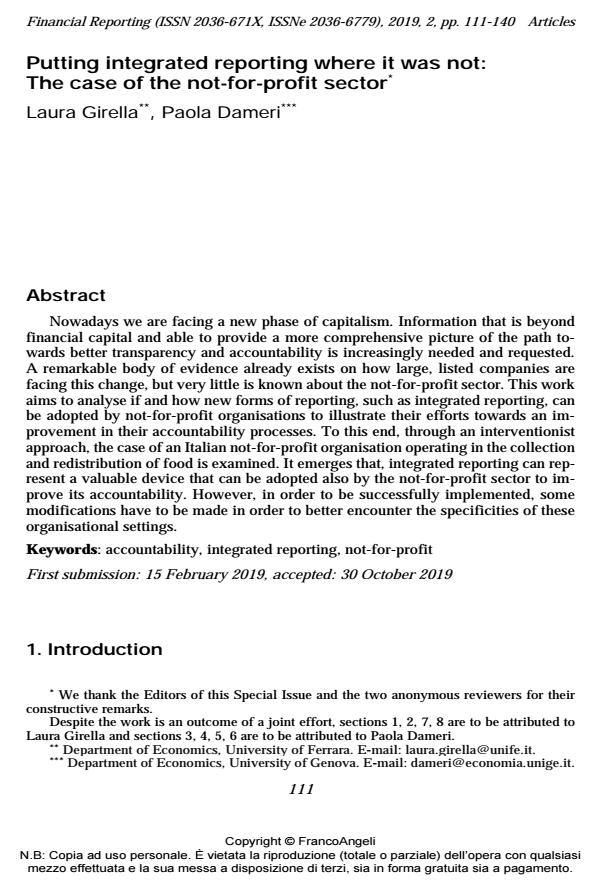Putting integrated reporting where it was not: The case of the not-for-profit sector
Titolo Rivista FINANCIAL REPORTING
Autori/Curatori Laura Girella, Paola Dameri
Anno di pubblicazione 2019 Fascicolo 2019/2
Lingua Inglese Numero pagine 30 P. 111-140 Dimensione file 141 KB
DOI 10.3280/FR2019-002005
Il DOI è il codice a barre della proprietà intellettuale: per saperne di più
clicca qui
Qui sotto puoi vedere in anteprima la prima pagina di questo articolo.
Se questo articolo ti interessa, lo puoi acquistare (e scaricare in formato pdf) seguendo le facili indicazioni per acquistare il download credit. Acquista Download Credits per scaricare questo Articolo in formato PDF

FrancoAngeli è membro della Publishers International Linking Association, Inc (PILA)associazione indipendente e non profit per facilitare (attraverso i servizi tecnologici implementati da CrossRef.org) l’accesso degli studiosi ai contenuti digitali nelle pubblicazioni professionali e scientifiche
Nowadays we are facing a new phase of capitalism. Information that is beyond financial capital and able to provide a more comprehensive picture of the path towards better transparency and accountability is increasingly needed and requested. A remarkable body of evidence already exists on how large, listed companies are facing this change, but very little is known about the not-for-profit sector. This work aims to analyse if and how new forms of reporting, such as integrat-ed reporting, can be adopted by not-for-profit organisations to illustrate their ef-forts towards an improvement in their accountability processes. To this end, through an interventionist approach, the case of an Italian not-for-profit organisa-tion operating in the collection and redistribution of food is examined. It emerges that, integrated reporting can represent a valuable device that can be adopted also by the not-for-profit sector to improve its accountability. However, in order to be successfully implemented, some modifications have to be made in order to better encounter the specificities of these organisational settings.
Parole chiave:Accountability, integrated reporting, not-for-profit
- The Human Capital for Value Creation and Social Impact: The Interpretation of the IR’s HC Definition Maurizio Cisi, Francesca Alice Centrone, in Sustainability /2021 pp.6989
DOI: 10.3390/su13136989 - Does the Adoption of Planning and Control Tools Influence Performance? Opinions of Grantors and Grantees About Non-profit Projects Giacomo Boesso, Fabrizio Cerbioni, Andrea Menini, in FINANCIAL REPORTING 2/2022 pp.35
DOI: 10.3280/FR2022-002002
Laura Girella, Paola Dameri, Putting integrated reporting where it was not: The case of the not-for-profit sector in "FINANCIAL REPORTING" 2/2019, pp 111-140, DOI: 10.3280/FR2019-002005